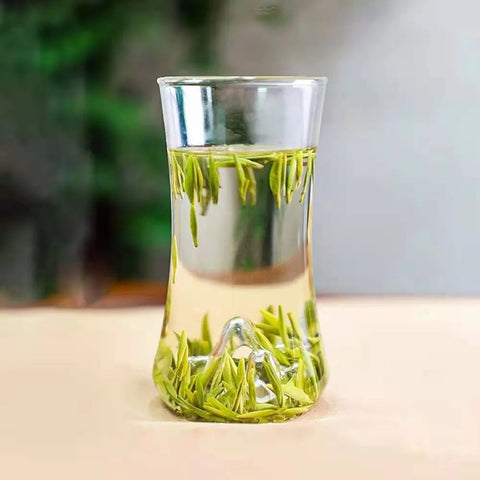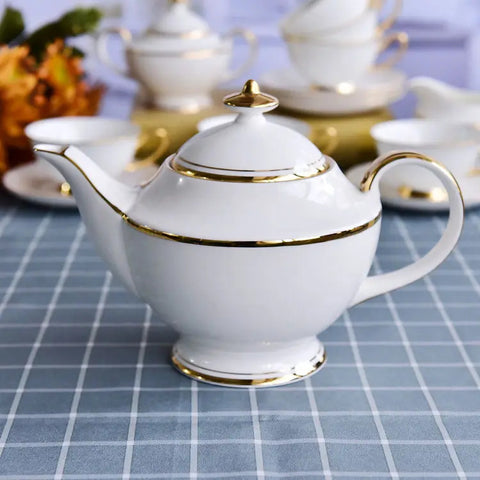You've gotten some of our exquisite, specialty Chinese & Taiwanese teas and you may be asking, how do I brew them? Well, we'll lay out three different brewing methods for you in this post. Chinese tea is a vast world consisting of many different types of teas that may require slightly different ways and parameters to brew them. Understandably, this would be daunting to someone who is new to all of this, so we'll try our best to explain using these 3 different styles of brewing tea.
1. Gongfu Style
Gongfu style is the traditional way of brewing Chinese & Taiwanese teas, and also arguably the best way to get the most out of most Chinese teas. Hence why we will be focusing more on Gongfu style in this post. Gongfu style employs a higher leaf-to-water ratio, meaning a higher amount of tea leaves used per unit of water. A typical Gongfu session sees one using 4-8 grams of leaves per 100ml of water, which when compared to other styles, is extremely high. The benefit of this is a more complex brew, bringing out the tea's character and allowing the tea to really shine. As steeping times are shorter due to the higher leaf-to-water ratio, you can brew the tea multiple times, with some teas even lasting upwards of 20 steeps. This really makes Gongfu brewing worth the added time and effort needed to perform it.
You need a few things to start brewing the Gongfu way:
- Gaiwan / Teapot
- Fairness Cup
- Teacup
- Tea Tray
- Cha Ze + Teaspoon

Then, you'll need to follow these few steps:
1. Prepare your tea
Prepare the tea that you will be using for your gongfu session. Pour the leaves into the Cha Ze using your teaspoon (amount will be discussed later). The Cha Ze acts as your presentation vessel, where you can show the leaves to the people who are drinking the tea with you - or show them to yourself if you're solo :) It also holds your tea leaves as you perform the next step.
2. Heating your teaware
Take boiling water and fill your gaiwan up. A teapot can be used instead of a gaiwan. Pour the hot water into your fairness cup and wait a while, before pouring the water into your cups. This heats all of your teaware up, so that when brewing the real thing, your teaware and your tea stays nice and warm.
3. Rinse your tea
Put the tea leaves into your heated gaiwan. Take a good whiff of the dry leaf aroma, before pouring hot water (temperature depending on the tea) into your gaiwan. Wait for around 20 seconds (30 seconds for compressed/ball-rolled teas) before pouring into your fairness cup. This is the rinse, and it's meant to "awaken" the tea leaves before your first steep. You can drink the rinse, but it's typically thrown out into your tea tray or a waste bowl. Then, smell the wet-leaf aroma that comes out of your gaiwan.
4. Brew the first steep
You're finally ready to brew your tea. Steep your tea (time & temperature will be discussed later) and pour it out into your fairness cup. A strainer can be placed on top of the fairness cup to ensure no leaf bits make it in. Make sure to cover the gaiwan with its lid while steeping. When the gaiwan is not being used for brewing, leave it uncovered to prevent steam from further steeping your tea leaves. A few jolts of the gaiwan may be required to get all the tea out. Now, pour your brewed tea from your fairness cup into your tea cup(s), and tada! You can now drink your cup of luxurious and exquisite Chinese tea.
5. Repeat
Chinese tea should be able to be rebrewed at least 3-5+ times for green teas, 4-6+ times for black teas, 5-8+ times for oolong teas, 4-7+ times for white teas, 3-5+ times for yellow teas, and 7-10+ times for post-fermented teas. Add 15-30s for each subsequent steep (eg. 1st steep - 30s, 2nd steep - 45s, 3rd steep - 1m, etc.)
6. Wash
Don't forget to wash your teaware! This helps prevent mold buildup, especially in your brewing vessels or on a tea tray. Make sure you remove all the tea leaves and throw them in a food waste bin or in your compost before washing. Don't use soap, especially with unglazed teawares! These kinds of teaware can absorb the soap in its porous structure, which won't be good for the next time you use them! Once done, wipe them and leave them out to fully dry.
Now, let's discuss parameters. This is just a rough estimate, and it's only meant as a starting point. Experiment yourself by slowly changing the parameters to find what suits you the best!
- Green tea: 4g / 100ml of 85°C/185°F water, 1st steep 30s
- Oolong tea: 5g / 100ml of 95°C/203°F water, 1st steep 30s
- Ball-rolled oolongs: 6g / 100ml of 95°C/203°F water, 1st steep 45s
- Yancha/Dancong oolongs: 8g / 100ml of 100°C/212°F water, 1st steep 15s
- Black tea: 5g / 100ml of 90°C/194°F water, 1st steep 20s
- White tea: 5g / 100ml of 90°C/194°F water, 1st steep 30s
- Yellow tea: 4g / 100ml of 85°C/185°F water, 1st steep 40s
- Post-fermented tea: 6g/100ml of 100°C/212°F water, 1st steep 30s
We also need to talk about how to hold a gaiwan. For someone unaccustomed to it, it may seem unwieldy and one may accidently pour hot water on themselves if they are not careful. Here's how to hold a gaiwan

Image Credit: 36zs - 百度图片
Ensure that two fingers (typically the thumb and middle finger) is grasping the rim of the gaiwan tightly, with the index finger on the lid handle. Open a small aperture that is big enough to allow liquid to flow through but small enough to prevent leaves from pouring out. Then, tilt your hand over your fairness cup, pouring the tea out. Do this with room temperature water first to practice, before moving on to hot water, and finally, tea. Once you've mastered all of the above, you've mastered gongfu style, and should be able to do it with ease!
Watch this video to learn more about the steps needed for Gongfu style brewing.
2. Grandpa style
Grandpa style is arguably the easiest of the three styles, and is probably the most common style to brew tea in China today. You simply need a tall glass or mug, and... right, that's it! Simply take a small handful of tea leaves, fill your glass or mug to the point where it covers the base, and pour hot water (temperature depending on the tea listed above) 2/3 up the glass or mug. Wait for a few minutes and take a sip. Too strong? Add a bit more water. Too weak? Wait a bit longer. That's the beauty of Grandpa style. There's no need to be accurate with it. However, if you do want to be a bit more accurate, we provide leaf-to-water ratio, temperature, and time parameters under our brewing guides for each of our teas.

Image Credit: Baijiahao - 百度图片
Grandpa style is very convenient, allowing you to brew your tea on-the-go in a tumbler or desk-side while working. It really is the easiest way to brew Chinese tea. Of course, there really isn't a way to strain your tea leaves, so you may end up eating one or two leaves, which is totally fine! After you've drank till a third of your glass or mug is left, you can always top it up with more water. Rinse and repeat till you feel that the leaves have nothing left to offer (typically after 3 rounds). Grandpa style works with most teas (maybe with the exception of post-fermented teas / aged teas), and is most suited for green, yellow, and white teas. Try it and experiment with different teas and parameters to see what works best for you!
3. Western Style
Western style isn't really suited for Chinese teas, and is more suited to Indian and Ceylon teas, but some may still prefer to brew it in this way. The biggest difference with western style is its much lower leaf-to-water ratio compared to gongfu style, which means lesser steeps and a less complex brew. However, it does require less skill and effort, and can be suitable for a free and easy tea session, especially with a group of friends or family.

Image Credit: Xingtai - 百度图片
Ideally, your teapot should have a filter installed. This filter holds the tea leaves as the tea is being brewed, so as to not lose the tea leaves when pouring your finished tea out. Simply place the tea leaves into the filter, and brew it with water. No need to rinse, pre-heat, or "awaken" the tea. As mentioned earlier, western style features less leaf and more water, which results in lesser amount of steeps to enjoy. The suggested brewing parameters for western style is as follows (temperatures are the same as gongfu style):
- Green teas: 2g/250ml, 3m steep
- Oolong teas: 3g/250ml, 3m steep
- Black teas: 2.5g/250ml, 2m30s steep
- White teas: 2.5g/250ml, 3m steep
- Yellow teas: 2g/250ml, 4m steep
- Post-fermented teas: 3g/250ml, 2m30s steep
You can then add 1 minute to each subsequent steep, totaling to around 2-4 steeps for western style.
Now that you've learnt about the three different ways to brew Chinese & Taiwanese tea, you can grab a few from your stash and brew with confidence. With some practice and effort, you can even master the most finnicky teas and become a "tea master" yourself!

